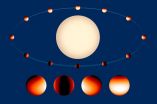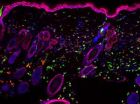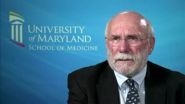(Press-News.org) When young mice with the rodent equivalent of a rare autism spectrum disorder (ASD), called Rett syndrome, were fed a diet supplemented with the synthetic oil triheptanoin, they lived longer than mice on regular diets. Importantly, their physical and behavioral symptoms were also less severe after being on the diet, according to results of new research from The Johns Hopkins University.
Researchers involved in the study think that triheptanoin improved the functioning of mitochondria, energy factories common to all cells. Since mitochondrial defects are seen in other ASDs, the researchers say, the experimental results offer hope that the oil could help not just people with Rett syndrome, but also patients with other, more common ASDs.
A description of the research will be published on Oct. 9 in the journal PLOS ONE.
ASDs affect an estimated one in 68 children under 8 years of age in the United States. Rett syndrome is a rare ASD caused by mutations in the MECP2 gene, which codes for methyl-CpG-binding-protein 2 (MeCP2). Rett syndrome includes autismlike signs, such as difficulty communicating, socializing and relating to others. Other hallmarks are seizures, decreased muscle tone, repetitive involuntary movements, and gastrointestinal and breathing problems. These other signs are also seen in some patients with other ASDs, suggesting underlying similarities in their causes. While the causes of most ASDs are unknown and thought to be complex, Rett syndrome is unique — and could be a source of insight for the others — because it is caused by an error in a single gene.
p>The research team used mice lacking the MeCP2 protein, which left them with severe Rett syndrome. In examining those mice, what stood out, according to Gabriele Ronnett, M.D., Ph.D., who led the research project at the Johns Hopkins University School of Medicine, was that they weighed the same as healthy mice but had large fat deposits accompanied by lower amounts of nonfat tissue, such as muscle. This suggested that calories were not being used to support normal tissue function but instead were being stored as fat.
This possibility led Ronnett and her research team to consider the role of mitochondria, which transform the building blocks of nutrients into a high-energy molecule, ATP. This molecule drives processes such as the building of muscle and the growth of nerve cells. Mitochondria use a series of biochemical reactions, collectively called the TCA cycle, to make this transformation possible. According to Susan Aja, Ph.D., a research associate and lead member of the research team, "If the components of the TCA cycle are low, nutrient building blocks are not processed well to create ATP. They are instead stored as fat."
Ronnett suspected, she says, that some of Rett syndrome's neurological symptoms could stem from metabolic deficiencies caused by faulty mitochondria and reduced energy for brain cells. "Rett syndrome becomes apparent in humans 6 to 18 months old, when the energy needs of the brain are particularly high, because a lot of new neural connections are being made," says Ronnett. "If the mitochondria are already defective, stressed or damaged, the increased demand would be too much for them."
Previous small clinical trials in people with a different metabolic disorder suggested that dietary intervention with triheptanoin could help. Triheptanoin is odorless, tasteless and a little thinner than olive oil. It is easily processed to produce one of the components of the TCA cycle.
When Rett syndrome mice were weaned at 4 weeks of age, they were fed a diet in which 30 percent of their calories came from triheptanoin, mixed in with their normal pelleted food. Though far from a cure, the results of the triheptanoin treatment were impressive, the researchers say. Treated mice had healthier mitochondria, improved motor function, increased social interest in other mice and lived four weeks — or 30 percent — longer than mice who did not receive the oil. The team also found that the diet normalized their body fat, glucose and fat metabolism.
"You can think of the mitochondria of the Rett syndrome model mice as damaged buckets with holes in them that allow TCA cycle components to leak out," says Aja. "We haven't figured out how to plug the holes, but we can keep the buckets full by providing triheptanoin to replenish the TCA cycle."
"It is still too early to assume that this oil will work in humans with ASDs, but these results give us hope," says Ronnett. "It's exciting to think that we might be able to improve many ASDs without having to identify each and every contributing gene."
According to Aja, additional mouse studies are needed to learn if female mice respond to the treatment, to perform a wider range of physiology and behavior tests, and, importantly, to assess the effects of triheptanoin treatment on the brain, which is considered the main driver of many Rett symptoms. The team would also like to provide triheptanoin at earlier ages, perhaps via the mothers' milk, to mimic developmental ages at which most children are diagnosed with Rett syndrome.
Triheptanoin is currently made for research purposes only and is not available as a medicine or dietary supplement for humans.
INFORMATION:
Other authors of the report include Min Jung Park, Qun Li, Alicia Degano, Judith Penati, Justin Zhuo and Charles Roe of the Johns Hopkins University School of Medicine.
This work was supported by research funds from Daegu Gyeongbuk Institute of Science and Technology Convergence Science Center, the National Institute of Neurological Disorders and Stroke (R01 NS041079), and Agilent Technologies.
On the Web
View article in PLOS ONE. http://dx.plos.org/10.1371/journal.pone.0109527
Learn more about The Center for Metabolism and Obesity Research. http://www.hopkinsmedicine.org/institute_basic_biomedical_sciences/research_centers/metabolism_obesity_research/
During their approximately 100-day lifespan in the bloodstream, red blood cells lose membrane surface area, volume, and hemoglobin content. A study publishing this week in PLOS Computational Biology finds that of these three changes, only the observed surface-area loss can be explained by RBCs shedding small hemoglobin-containing vesicles budding off their cells' membrane.
Red blood cell concentration, mean volume, and hemoglobin content are routinely measured in the complete blood count, a fundamental clinical test essential to the screening, diagnosis, and management ...
As birth rates decline in countries that include parts of Europe and East Asia, threatening the economic slowdown associated with aging populations, a global study from the University of California, Berkeley, and the East-West Center in Hawaii suggests that in much of the world, it actually pays to have fewer children. The results challenge previous assumptions about population growth.
Researchers in 40 countries correlated birth rates with economic data and concluded that a moderately low birth rate – a little below two children per woman – can actually ...
A team of scientists including a University of Colorado Boulder professor used NASA's Hubble Space Telescope to make the most detailed global map yet of the glow from a giant, oddball planet orbiting another star, an object twice as massive as Jupiter and hot enough to melt steel.
The Hubble observations show that the planet, called WASP-43b, is no place to call home. It's a world of extremes, where winds howl at the speed of sound from a 3,000-degree-Fahrenheit dayside to a pitch-black nightside when temperatures plunge to a relatively cool 1,000 degrees Fahrenheit, ...
Using X-rays and neutron beams, a team of researchers from the University of California, San Diego School of Medicine, University of Utah and Oak Ridge National Laboratory have teased out new information about Protein Kinase A (PKA), a ubiquitous master switch that helps regulate fundamental cellular functions like energy consumption and interactions with hormones, neurotransmitters and drugs.
"Mutations in PKA can lead to a variety of different human diseases, including cancers, metabolic and cardiovascular diseases and diseases involving the brain and nervous system," ...
Known cancer-driving genomic aberrations in localized lung cancer appear to be so consistently present across tumors that a single biopsy of one region of the tumor is likely to identify most of them, according to a paper published today in Science.
The study led by scientists at The University of Texas MD Anderson Cancer Center addresses the challenge of what scientists call genomic heterogeneity, the presence of many different variations that drive tumor formation, growth and progression, and likely complicate the choice and potential efficacy of therapy.
A landmark ...
A team of scientists using the NASA/ESA Hubble Space Telescope have made the most detailed map ever of the temperature of an exoplanet's atmosphere, and traced the amount of water it contains. The planet targeted for both of the investigations was the hot-Jupiter exoplanet WASP-43b.
WASP-43b WASP-43b is a planet the size of Jupiter but with double the mass and an orbit much closer to its parent star than any planet in the Solar System. It has one of the shortest years ever measured for an exoplanet of its size -- lasting just 19 hours.
A team of astronomers working ...
COLUMBIA, Mo. – As more people in the middle of their careers decide to return to school to further their education, the number of students applying to graduate school programs across the country has reached a record high in the past decade. With record numbers of potential students applying to their programs, many graduate school admissions evaluators are working to develop stronger admissions criteria that assure they are admitting students who will succeed academically. Now, researchers at the University of Missouri have found that traditional measures such as ...
In rare cases, patients with allergies to metals develop persistent skin rashes after metal devices are implanted near the skin. New research suggests these patients may be at increased risk of an unusual and aggressive form of skin cancer.
Metal alloys help make orthopedic implants stronger and more durable. But people with sensitivity to these metals, which include nickel, cobalt and chromium, can develop chronic inflammation that promotes the development of skin cancers, report researchers at Washington University School of Medicine and Barnes-Jewish Hospital in St. ...
VIDEO:
Dr. Myron M. Levine, Director of the Center for Vaccine Development at the University of Maryland School of Medicine describes the Ebola vaccine testing taking place in Mali, West Africa.
Click here for more information.
Professor Myron M. Levine, MD, Director of the Center for Vaccine Development (CVD) at the University of Maryland School of Medicine (UM SOM), and UM SOM Dean E. Albert Reece MD, PhD, MBA, announced today that the CVD, in conjunction with its sister institution, ...
People with autism spectrum disorder often experience a period of accelerated brain growth after birth. No one knows why, or whether the change is linked to any specific behavioral changes.
A new study by UCLA researchers demonstrates how, in pregnant mice, inflammation, a first line defense of the immune system, can trigger an excessive division of neural stem cells that can cause "overgrowth" in the offspring's brain.
The paper appears Oct. 9 in the online edition of the journal Stem Cell Reports.
"We have now shown that one way maternal inflammation could result ...



